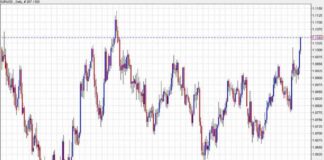The dollar strengthened in the currency markets despite US Treasury yields struggling to break through resistance levels last week. Investors adjusted their expectations for the Fed’s monetary policy, anticipating a slower pace of interest rate cuts in the coming year. This shift in sentiment was reflected in a late selloff, providing support for the greenback. However, the Dollar Index faces hurdles in sustaining its upward momentum as it sits in a critical resistance zone.
In a surprising turn, the Japanese Yen emerged as the second-best performer of the week without aggressive verbal intervention from Japanese authorities. While there are no clear signs of a reversal against the Dollar, the Yen has made progress against other major currencies. The Canadian Dollar also showed strong performance despite expectations of interest rate cuts by the Bank of Canada and a selloff in oil.
On the flip side, the British Pound ended the week as the worst performer, with the Australian and New Zealand Dollars not far behind. These currencies were pressured by deteriorating risk sentiment across global markets. For the Pound, weaker-than-expected GDP data and an increase in the unemployment rate have strengthened the position of dovish policymakers within the Bank of England for another interest rate cut. The Australian and New Zealand Dollars were affected by frustration over the lack of concrete action in China’s fiscal stimulus measures.
Investor sentiment in the US is shifting, with bearish reversal signals appearing in major stock indexes. This reflects adjusted expectations around the Fed’s interest rate strategy for 2025. October’s CPI data, showing persistent inflationary pressures, along with concerns over the inflationary effects of President-elect Donald Trump’s policies, reinforce the view that rate cuts will be slower and more limited.
Technically, the Dollar Index made significant progress with a strong rally last week, entering an important long-term resistance zone. The 10-year yield struggled to break through a medium-term Fibonacci resistance cleanly. Looking ahead, the Dollar Index’s bullish trend reversal will depend on the strength of the 10-year yield, a correction in stocks, or both.
In the background, the Dollar Index has strong support from the 55 M EMA this year, maintaining the long-term uptrend. A sustained break above 107.92 could target the 2022 high of 114.77, contingent on progress in the 10-year yield and a selloff in stocks.
The Yen rebounded last week as US market sentiment turned negative, potentially reducing the need for Japan to intervene. The AUD/JPY pair showed signs of rejection and a possible bearish turn, with a break below key support levels.
Overall, the currency markets are influenced by shifting sentiment around central bank policies, economic data, and global market conditions. As investors navigate these changes, the performance of major currencies against the Dollar will continue to be closely watched.

















